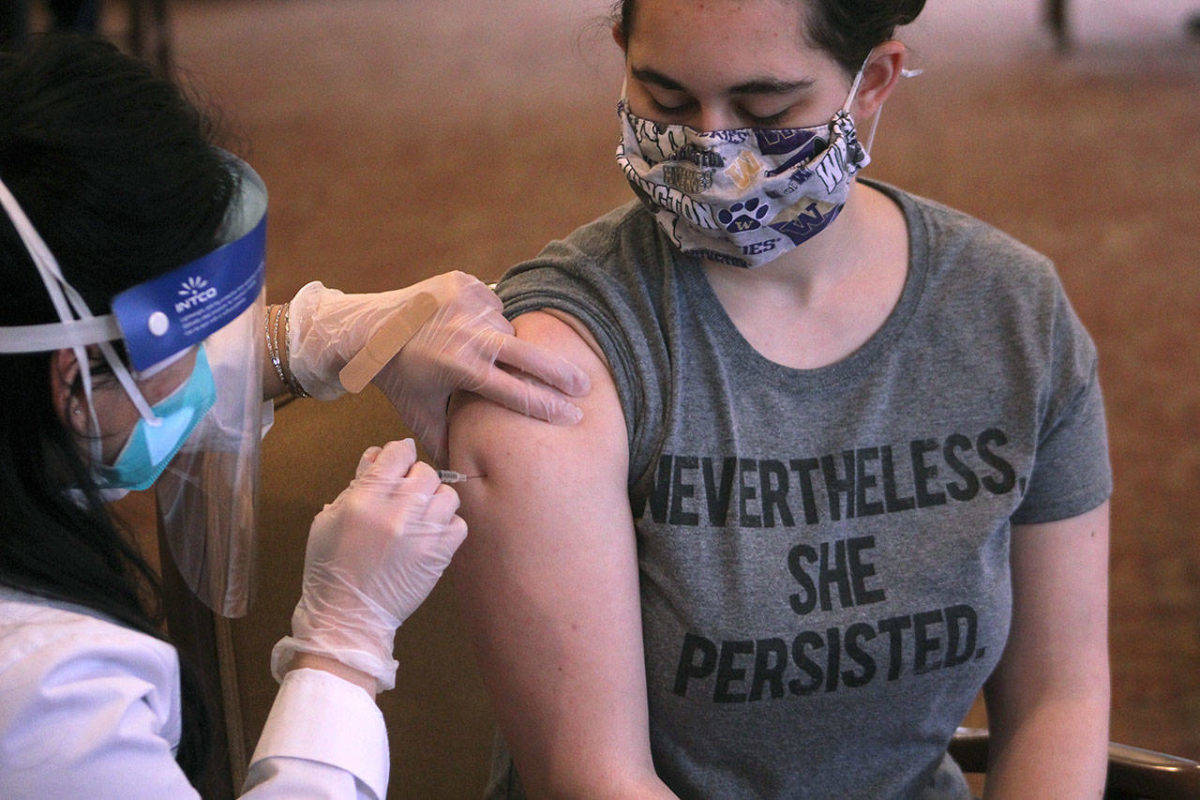Herd immunity may be unlikely to reach King County anytime soon, but that doesn’t mean that people living in the county won’t be able to resume something similar to a pre-pandemic life sooner.
That’s according to Jeff Duchin, the county’s public health officer, who in a press conference on April 30 said he’s focusing on reaching community immunity instead. The rundown is basically this: herd immunity means COVID-19 can’t spread effectively from person to person across the population because enough people have immunity, either from a vaccine or natural infection.
It sounds ideal, but most experts think that to reach herd immunity — long the stated end goal of curtailing the pandemic — some 80% to 90% of people must be vaccinated or previously infected. That’s likely to remain a far-off goal, considering that only 38.9% of Washingtonians ages 16 and older have been fully vaccinated as of May 5. And with vaccine skepticism rippling across the country, it’s unclear when or if the U.S. will reach herd immunity.
There are currently no vaccines approved for use in children, and teens ages 12 to 15 have yet to receive vaccines after the Pfizer shot was approved last month for this age range. Duchin said considering 20% of the population is children, it’s unlikely herd immunity could be reached just from that barrier alone.
Despite this, Duchin said King County could reach community immunity if at least 70% of people receive vaccines or have already been infected, allowing their bodies to produce antibodies.
“If we get to 70%, we have 70% coverage,” Duchin said during the press conference. “We have 70% community immunity. That’s a substantial level of protection. The higher level of protection we have, the less disease we will have, and the more likely it is we’ll be able to re-engage in our pre-COVID lifestyles.”
There’s also the problem of new variants emerging that could be more infectious. Already, there are several variants circulating worldwide and in Washington state that are transmitted more easily. These include variants that initially emerged in the U.K., South Africa, Brazil and California.
Even with these concerns, Duchin said the county doesn’t have to reach herd immunity to resume life in a way similar to before COVID-19. Undertaking measures like improving ventilation in buildings, being cautious during face to face interactions and wearing masks in high-risk situations could be ways to help ease back into normal life while staying safe.
Duchin made it clear he can’t predict what the future holds, or how the virus and countermeasures will evolve over the course of years. The situation globally is also of concern because the virus can easily travel from country to country. If the virus is uncontrolled anywhere, it can allow new variants to emerge that can threaten people locally. Because of this, Duchin said the U.S. has a strong interest in making sure there’s a robust vaccine supply everywhere in the world.
In King County, a fourth wave of the pandemic has been ongoing since early March as cases increased. Gov. Jay Inslee on May 4 announced that no counties would be moving phases for two weeks under the Roadmap to Recovery plan. The two-week pause will allow public health officials time to see whether cases have hit a plateau, or if they will continue to rise.
“We are at the intersection of progress and failure, and we cannot veer from the path of progress,” Inslee said in a press release on May 4. “Our economy is beginning to show early signs of growth thanks to some of our great legislative victories and we know vaccines are the ticket to further reopening — if we adhere to public health until enough people are vaccinated.”
Vaccines are available to all Washingtonians ages 16 and up. Appointments can be found at VaccineLocator.doh.wa.gov.
Talk to us
Please share your story tips by emailing editor@kentreporter.com.
To share your opinion for publication, submit a letter through our website https://www.kentreporter.com/submit-letter/. Include your name, address and daytime phone number. (We’ll only publish your name and hometown.) Please keep letters to 300 words or less.

